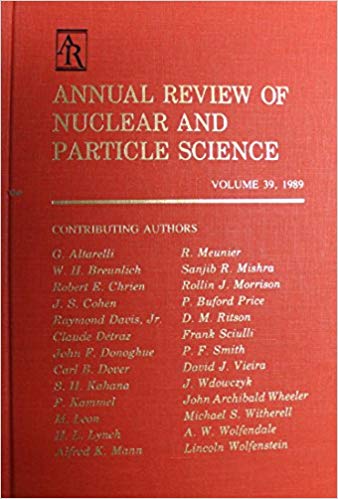High-Field Magnets for Future Hadron Colliders
IF 8.4
2区 物理与天体物理
Q1 PHYSICS, NUCLEAR
Annual Review of Nuclear and Particle Science
Pub Date : 2024-09-26
DOI:10.1146/annurev-nucl-102122-022007
引用次数: 0
Abstract
Recent strategy updates by the international particle physics community have confirmed strong interest in a next-generation energy frontier collider after completion of the High-Luminosity LHC program and construction of a e + e − Higgs factory. Both hadron and muon colliders provide a path toward the highest energies, and both require significant and sustained development to achieve technical readiness and optimize the design. For hadron colliders, the energy reach is determined by machine circumference and the strength of the guiding magnetic field. To achieve a collision energy of 100 TeV while limiting the circumference to 100 km, a dipole field of 16 T is required and is within the reach of niobium–tin magnets operating at 1.9 K. Magnets based on high-temperature superconductors may enable a range of alternatives, including a more compact footprint, a reduction of the cooling power, or a further increase of the collision energy to 150 TeV. The feasibility and cost of the magnet system will determine the possible options and optimal configurations. In this article, I review the historical milestones and recent progress in superconducting materials, design concepts, magnet fabrication, and test results and emphasize current developments that have the potential to address the most significant challenges and shape future directions.未来强子对撞机的高场磁铁
国际粒子物理学界最近的战略更新证实,在高亮度大型强子对撞机计划和 e + e - 希格斯工厂建设完成之后,人们对下一代能量前沿对撞机有着浓厚的兴趣。强子对撞机和μ介子对撞机都提供了一条通往最高能量的道路,但两者都需要大量持续的开发工作,以实现技术就绪和优化设计。对于强子对撞机来说,能量范围由机器周长和引导磁场强度决定。要达到 100 TeV 的对撞能量,同时将周长限制在 100 千米,需要 16 T 的偶极子磁场,这是在 1.9 K 下工作的铌锡磁体所能达到的。以高温超导体为基础的磁体可能会带来一系列替代方案,包括更紧凑的占地面积、降低冷却功率或将对撞能量进一步提高到 150 TeV。磁体系统的可行性和成本将决定可能的选择和最佳配置。在这篇文章中,我回顾了超导材料、设计概念、磁体制造和测试结果方面的历史里程碑和最新进展,并强调了当前有可能应对最重大挑战和塑造未来方向的发展。
本文章由计算机程序翻译,如有差异,请以英文原文为准。
求助全文
约1分钟内获得全文
求助全文
来源期刊
CiteScore
21.50
自引率
0.80%
发文量
18
期刊介绍:
The Annual Review of Nuclear and Particle Science is a publication that has been available since 1952. It focuses on various aspects of nuclear and particle science, including both theoretical and experimental developments. The journal covers topics such as nuclear structure, heavy ion interactions, oscillations observed in solar and atmospheric neutrinos, the physics of heavy quarks, the impact of particle and nuclear physics on astroparticle physics, and recent advancements in accelerator design and instrumentation.
One significant recent change in the journal is the conversion of its current volume from gated to open access. This conversion was made possible through Annual Reviews' Subscribe to Open program. As a result, all articles published in the current volume are now freely available to the public under a CC BY license. This change allows for greater accessibility and dissemination of research in the field of nuclear and particle science.

 求助内容:
求助内容: 应助结果提醒方式:
应助结果提醒方式:


